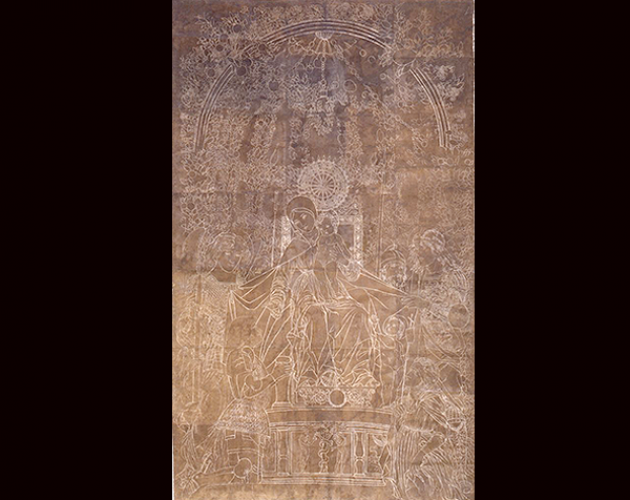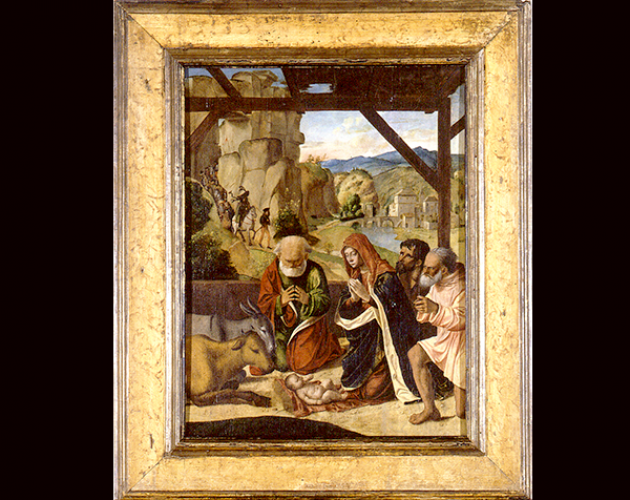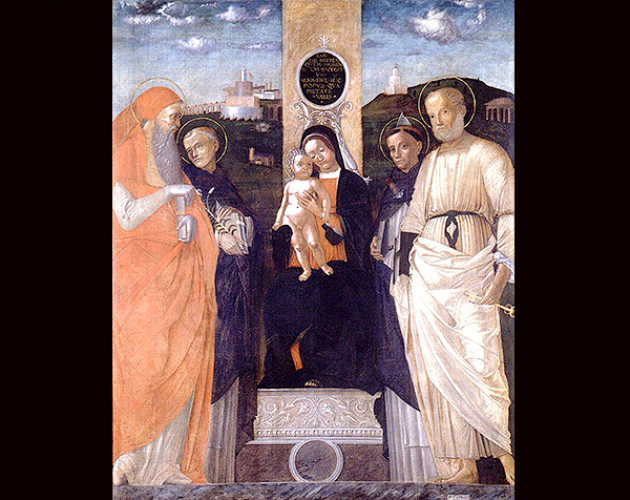The huge room that hosts examples of painting in Mantua during the 15th and 16th centuries was obtained in the second half of the 17th century by lowering the ceiling of the Room of the Triumphs and raising the wooden trussed roof above to create a second floor. This was divided up into smaller rooms that were frescoed with landscape views and plant motifs.
The subject of the small but significant collection of paintings is again the city of Mantua at the height of the Renaissance: a fragmented story that however recounts the carefully planned design of a city with its origins in humanism and in the constant references to and sources of inspiration offered by the classical tradition at its finest hour.
The works on display faithfully reflect the image of the Renaissance city with its decorated and frescoed palazzi, churches with their devotional art linked both to Gonazaga and private commissions, and the classical style decorations of its buildings.
The real guiding spirit of Mantua’s resurgence was unquestionably Andrea Mantegna (1413-1506), who left an indelible mark on the figurative imaginary of Mantuan art, a fact in part made possible by his numerous pupils. However, also present are works that testify to the presence of other influences deriving above all from the nearby Lombard-Veneto and Emilian areas. The paintings, mostly devotional and on wood or canvas, were commissioned both by the city, often the Gonzaga, and by private citizens.






